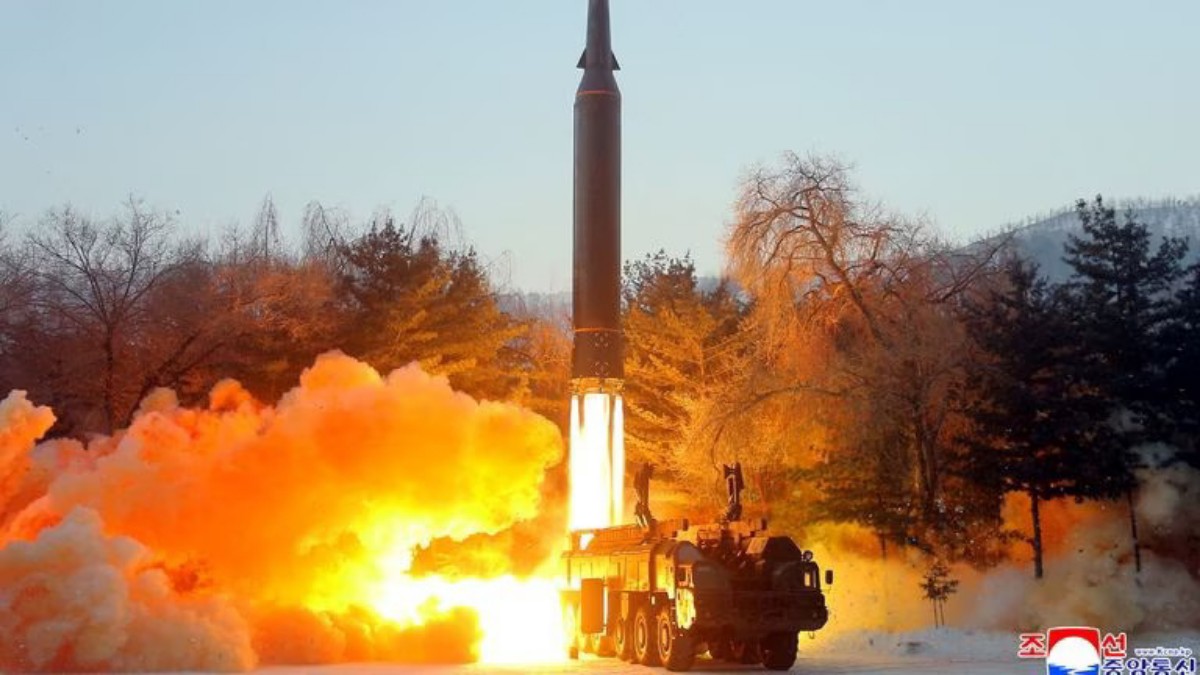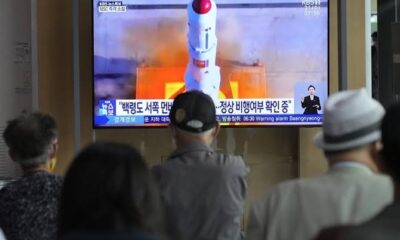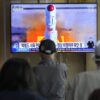North Korea tried but failed to launch an unidentified projectile early Wednesday, South Korea’s military said, in what could be the North’s first high-profile missile failure in years.
South Korea’s military said the unknown North Korean projectile appears to have failed “immediately after the launch,” which occurred in the Sunan area near Pyongyang.
It is not clear what type of weapon North Korea attempted to test. Earlier, Japanese media reported North Korea fired an apparent ballistic missile but offered no more details.
North Korea has not commented. It usually offers details about its weapons tests in state media reports the following morning, but very often does not acknowledge missile failures.

U.S. and South Korean officials have warned North Korea could soon conduct a full test of a new intercontinental ballistic missile, possibly under the guise of a satellite launch. U.S. officials said North Korea’s previous two launches were partial tests of the ICBM.
In response to those tests, the U.S. military said Tuesday it intensified air defense drills in South Korea and conducted an aircraft carrier exercise in the nearby Yellow Sea as part of a “demonstration of resolve.”
The situation risks a return to tensions not seen since 2017 when North Korean leader Kim Jong Un and former U.S. President Donald Trump exchanged threats of nuclear war before engaging in a series of unprecedented talks. For now, the rhetoric on both sides is much more restrained.
So far this year, North Korea has fired, or attempted to fire, 14 missiles during 10 rounds of launches, as it systematically works through a wish list of strategic weapons laid out by Kim last year.
North Korea has said it is preparing to launch a military spy satellite. Such a launch could also serve as an important weapons development on its own if it utilizes a massive new ICBM, as U.S. officials predict.
Analysts say the Hwasong-17 ICBM, first seen at a military parade in 2020, appears capable of carrying multiple warheads, which would pose a challenge for the missile defenses of the United States and its allies.
In addition to the mystery about the type of projectile North Korea was trying to launch, it is also unclear what went wrong or how that could impact future weapons development.
Since Japan, not South Korea, first reported the attempted launch, the missile likely did not rise high enough above the horizon to be detected by South Korean radars, according to Joshua Pollack, a researcher at the James Martin Center for Nonproliferation Studies.
North Korea experienced a series of high-profile missile failures in 2017, as well as problems with short-range launches in subsequent years. Although it has been years since a reported North Korean missile failure, experts stress that missile malfunctions are not uncommon.
“It depends on how mature the technology is. But none of these things are failure-proof,” says Pollack, who studies North Korea’s weapons program.
Jean Lee, a senior fellow at the Washington-based Wilson Center, warned against dismissing North Korea’s failed launches, noting that every test — even failures — moves scientists a step closer to success. “And that should worry us,” she added.
Wednesday’s failed launch occurred in the Sunan area of Pyongyang, presumably near the site of North Korea’s previous two tests, which used the airfield of an international airport. Certain flight paths may have taken the missile over populated areas, some experts have noted.
It wouldn’t be the first time a malfunctioning North Korean missile struck one of the country’s populated areas. In 2018, a Hwasong-12 intermediate-range missile failed shortly after launch and landed on the city of Tokchon, according to analysts who viewed satellite imagery at the time.
North Korean missile tests also threaten international civilian aircraft. In a statement Tuesday, the International Civil Aviation Organization said unannounced North Korean launches “pose a serious risk to international civil aviation.”
“As an ICAO Member State, the DPRK is expected to notify adjacent countries of any activity or incident arising from its territory which may pose risks to nearby civil aviation routes or operations,” the United Nations agency warned, using an abbreviation for North Korea’s official name.






























